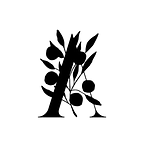How can consumers contribute towards a circular economy? Reuse. | Annie Clementine
Today, we’re taking a closer look into the ‘Reuse’ method of circular design. For those of you who are just joining our circular journey, the ten principles have been created by the work of the City of Amsterdam, as part of their Circular City Strategy. We are taking a deeper look into circular design from the lens of the consumer, choosing to challenge the traditional linear model, and view waste as a resource.
Reuse: Reuse of discarded functioning product in the same function by a different user.
We don’t know about you, but this one feels close to home. Off the top of your head, can you guess how many items of clothing in your closet you actually wear regularly vs. the clothes that have maybe gotten 1–2 wears before being permanently stacked in the back of your wardrobe? For many of us, the solution is either to give these clothes away or worse, throw them in the trash. This isn’t meant to shame you as a consumer, but rather to shed light on the solutions that do exist to make better use of the products that we no longer need.
In each of our circular design principle posts, we highlight a company or brand helping to put circularity on the map. Imagine that instead of throwing our clothing or unused products away, we could not only ensure they were given another life, but also earn some extra pocket money?
This is where Poshmark comes in. Poshmark is an online platform that connects sellers (people who have clothing or items they no longer want or need) to buyers (consumers who are looking to support second hand clothing and local sellers). Their large variety of items for sale (upwards of 200 million),reiterates the importance of transitioning to a circular economy. If we as consumers begin to focus our buying habits towards second hand products, we are one by one playing our role in reducing the environmental footprint of textiles and other consumer goods. Next time you go to buy a brand new product, consider checking out platforms like Poshmark. When we as consumers support the reuse of products, the businesses start to pay attention. Furthermore, by re-using products, we’re able to create a more equitable retail world by providing these products at more accessible, affordable rates.
Poshmark is only one example of a circular brand playing their role in designing a regenerative, distributive future. Feel free to comment and share if you know of any businesses or brands like Poshmark who are playing their role in building a circular future.
